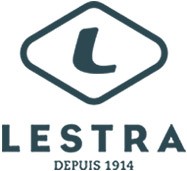A GUIDE TO LESTRA SLEEPINGS BAGS :
THE MAIN CRITERIA
1. FILL
DOWN:
 Down sleeping bags are light, compressible, highly insulating and breathable.
Down sleeping bags are light, compressible, highly insulating and breathable.
They provide an optimal weight/warmth ratio. However, they lose their insulating properties if they are wet; they are therefore not recommended if there is a high risk of moisture exposure.
- The fills of Lestra sleeping bags come in goose down and duck down.
An illustration indicates this, in addition to the percentage used.
- For each sleeping bag, the fill power is also indicated. Measured in cubic inches, it gives the quality of the down and its insulating capacity. The indicated value corresponds to the volume of one American ounce of down (28.35g).
The more carefully the down has been sorted, the higher the fill power.
SYNTHETIC:
 Easy to maintain and hypoallergenic, synthetic sleeping bags are heavier and less compressible than down sleeping bags (at the same temperature), but they are more resistant to moisture. This fill is recommended if the sleeping bag is likely to be exposed to bad weather (night under the stars or in a damp location).
Easy to maintain and hypoallergenic, synthetic sleeping bags are heavier and less compressible than down sleeping bags (at the same temperature), but they are more resistant to moisture. This fill is recommended if the sleeping bag is likely to be exposed to bad weather (night under the stars or in a damp location).
WOOL:
 An innovation of the 2015 Lestra collection, wool has all the advantages of an excellent fill. It is natural, antibacterial, renewable, recyclable and biodegradable.
An innovation of the 2015 Lestra collection, wool has all the advantages of an excellent fill. It is natural, antibacterial, renewable, recyclable and biodegradable.
In cold weather, wool regulates the moisture absorbed in the surroundings to generate heat. Its fibres and spirals contain millions of air pockets which trap body heat to keep you warm.
2. TEMPERATURES
For each Lestra sleeping bag, 4 temperatures are indicated – maximal, comfort, limit and extreme.
- between the maximal temperature and the comfort temperature, the person, in a relaxed position lying on their back, is in thermal equilibrium and does not feel cold at all.
- at the limit comfort temperature, the person, curled up in the sleeping bag to reduce heat loss, is at the limit of feeling cold.
- the extreme temperature is the temperature at which there begins to be risk of hypothermia.
The interval between the comfort temperature and the limit temperature should serve as a reference.
Temperatures indicated are based on the EN13537 European standard.
3. WEIGHT AND COMPRESSED VOLUME
Weight is an important criterion, particularly for hiking in total autonomy.
Down sleeping bags have the best weight/temperature ratio. Light sleeping bags do not fare well in very low temperatures, however.
In addition to the weight, the compressed volume of the sleeping bag is an important criterion so so that the user is not weighed down with too large a sleeping bag.
4. SHAPE
Mummy-shaped sleeping bags, wider at the shoulder and tapered at the bottom, fit snugly around the body, thus optimizing thermal protection.
They are also lighter and less cumbersome than rectangular bags.
Rectangular sleeping bags are more comfortable, as they are wider around the feet.
However, with a similar fill, they offer inferior thermal protection as they contain
more air.
